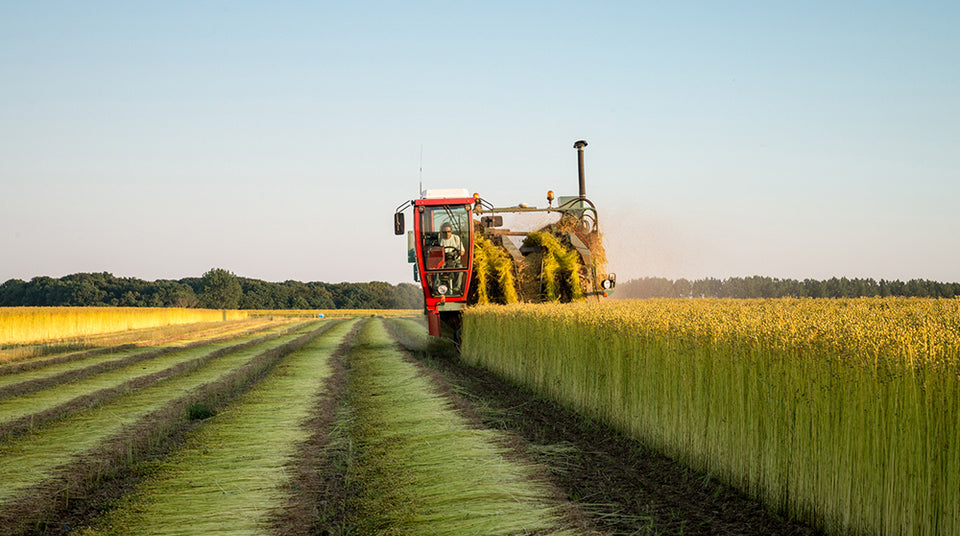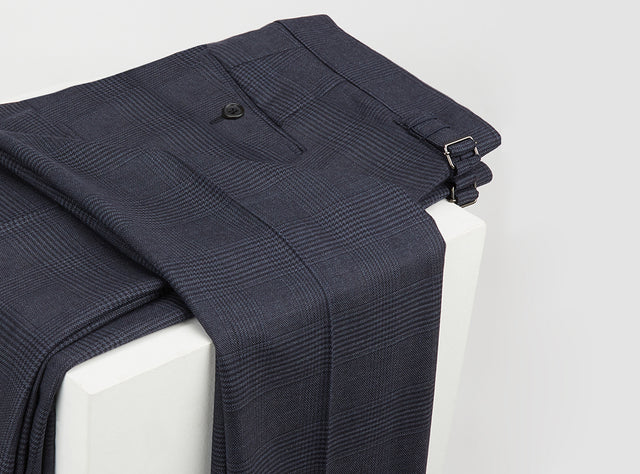A Trip to Albini: How Linen is Made
The Albini Group work with flax growers Terre de Lin - the largest linen cooperative in Europe - to produce the premium fabric used to create our linen collection.

The process starts in Normandy, a region with a particular climate which encourages the growth of Flax. The flax is sown between mid-March and mid-April and consists of a single stem. The blue flower is a tiny capsule containing five lobes, each containing two seeds. The flower only lives for half a day—the meadow will bloom in the morning and be green again by the evening.

The flax plant’s vegetation period lasts approximately 100 days. The time of harvesting (between July and August) is one of the most sensitive parts to the cultivation of flax. The flax must then be retted to mature. Once the flax is pulled out and left on the ground, the humidity, wind and mild temperatures start a process of decomposition, hence the importance of the climatic conditions. The process is entirely natural - linen is an eco-friendly and sustainable material as there is no waste as all of the parts are used.

In order to extract the fibres from the stalk, it is necessary to scutch the plants. "Scutching" consists of removing the woody residue from the centre of the stem. The longest staple fibres are hand-selected at the exit from the turbines and are classified based on their characteristics and colour.
The transformation continues in Bergamo, Italy. The weaving, produced by Albini on high-tech weaving looms, is carried out by highly experienced technicians. Temperature and humidity are regulated according to the needs of the fibre, and the looms travel at a reduced speed with the maximum attention of the staff. All loom-state fabrics are visually controlled by skilled inspectors at 100%. In the Albini Group finishing mill in Brebbia, Italy, the fabrics are finished to remove all the impurities of the process and revitalise the natural characteristics of this wonderful fibre.

Linen yarn is very durable, but also irregular. These features require a number of specific precautions and special arrangements during the dyeing and weaving process. A special winding of the yarn cones permits the Albini Group to obtain a uniform dyeing both in and outside. Each single yarn of linen, in the phase of preparation of the warp, is coated by a protective wax which makes it even more resistant and more sliding for subsequent processing. In this way, possible damage to the warp due to the irregularity of the yarn can be avoided.

The linen fabric is then sent to our Gloucester factory to be created in to our classic fit shirts with a Cambridge collar and three button-cuff. The final outcome is a lightweight, breathable shirt perfect for the warmer weather. The linen collection is formed of eight colours: Navy, Sky Blue, Pink, Lilac, Turquoise, Orange, Green and Natural. Discover the collection.



